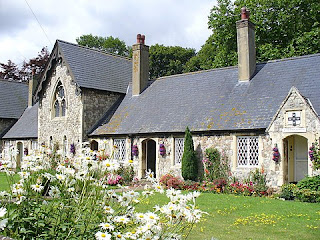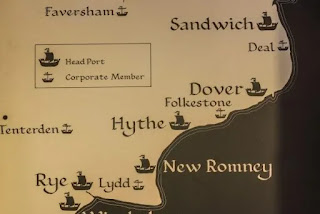Once Cnut was firmly established as king, he set about ensuring his power. He first executed or drove away (if they were wise) potential rivals, and put Danes in positions of authority until Anglo-Saxons proved their loyalty to him sufficiently.
Remember that England at this time was home to several separate kingdoms (like Northumbria, Wessex, Mercia, etc.) that looked to a more-powerful king as their "first among equals" or "high king." Cnut kept Wessex in his own hands.
He also created a new coinage equal in value to what was being used in Denmark, aiding trade between the two countries (eventually, he would be King of two other countries as well).
Despite his unorthodox double marriage to Ælfgifu of Northampton and Emma of Normandy, he was respectful of the Church and converted to Christianity. Christ Church in Sandwich (his first landing point in England when he came to conquer it) received a tax exemption.
He traveled to Rome in Easter 1027 for the coronation of Conrad II as Holy Roman Emperor to strengthen the relations between the Empire and his own North Sea Empire. He also claimed the trip was to repent for his sins before Pope John XIX, and to negotiate with the pope that English archbishops' fees to receive the pallium should be lower. In a letter he wrote in 1027, he talked about the need for better travel conditions for pilgrims:
... I spoke with the Emperor himself and the Lord Pope and the princes there about the needs of all people of my entire realm, both English and Danes, that a juster law and securer peace might be granted to them on the road to Rome and that they should not be straitened by so many barriers along the road, and harassed by unjust tolls; .... And all the magnates confirmed by edict that my people, both merchants, and the others who travel to make their devotions, might go to Rome and return without being afflicted by barriers and toll collectors...
The best-known anecdote about Cnut was recorded by Henry of Huntingdon a century later in which we see what Cnut could not accomplish:
When he was at the height of his ascendancy, he ordered his chair to be placed on the sea-shore as the tide was coming in. Then he said to the rising tide, "You are subject to me, as the land on which I am sitting is mine, and no one has resisted my overlordship with impunity. I command you, therefore, not to rise on to my land, nor to presume to wet the clothing or limbs of your master." But the sea came up as usual, and disrespectfully drenched the king's feet and shins. So jumping back, the king cried, "Let all the world know that the power of kings is empty and worthless, and there is no king worthy of the name save Him by whose will heaven, earth and the sea obey eternal laws."
So he couldn't rule the sea. He did rule more than England, however, when his brother, King Harald II of Denmark, died in 1018. Let's talk about that next, and how he managed two kingdoms so far apart.



























